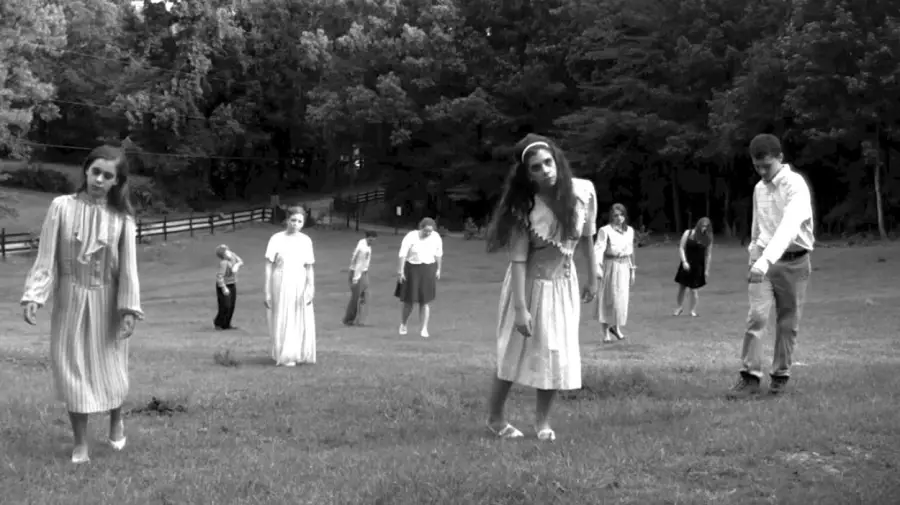Some films entertain. Some films terrify. And then there are films like Night of the Living Dead—films that completely rewrite the rules of an entire genre while scarring entire generations in the process. George A. Romero’s 1968 masterpiece didn’t just redefine horror—it created modern horror. Without it, there would be no The Walking Dead, no 28 Days Later, no Resident Evil—only stale, shuffling B-movie creatures best left in the drive-in dustbin of history.
Shot on a shoestring budget with a cast of unknowns, Night of the Living Dead is the cinematic equivalent of an atomic bomb, detonating every cozy convention of the monster movie and replacing it with something raw, relentless, and utterly bleak. There are no mad scientists, no Gothic castles, no silver bullets or wooden stakes. There is only survival—and the overwhelming, sickening certainty that it may not be worth it.
The plot is brutally simple: A young woman, Barbra (Judith O’Dea), flees to an isolated farmhouse after witnessing her brother’s gruesome death at the hands of a strange, stumbling figure. As the night unfolds, more strangers arrive, barricading themselves inside as the dead rise outside. Tensions mount, tempers flare, and before long, it’s clear that the real threat isn’t just the ghouls clawing at the windows—it’s each other.
And then there’s Ben. Played by Duane Jones with a quiet authority that feels almost radical, Ben is one of horror’s greatest protagonists, not just because he’s resourceful and determined, but because he is right—about everything. He knows that panic and selfishness will get them all killed. He knows that the dead cannot be reasoned with. And yet, despite his clear competence, he is dismissed, ignored, and undermined by the very people he’s trying to save. That his fate is both tragic and bitterly ironic only underscores Night of the Living Dead’s biting social commentary.
Yes, this is a horror film, but make no mistake—Night of the Living Dead is also one of the most politically charged films of its era. Released at the height of the Civil Rights Movement, its depiction of an intelligent Black man being treated as an outsider and ultimately killed not by zombies, but by his fellow humans, is no accident. Romero, ever the subversive genius, never once calls attention to Ben’s race in the dialogue. He doesn’t have to. The final gut-punch of an ending—where a group of white, rifle-toting men casually dispose of Ben’s body like so much trash—is more powerful than any speech could ever be.
Of course, none of this would matter if Night of the Living Dead weren’t also an absolute masterpiece of horror craftsmanship. The stark black-and-white cinematography gives the film a grainy, documentary-like realism, making the terror feel uncomfortably real. The use of shadow and light is nothing short of brilliant, with zombies emerging from the darkness like half-forgotten nightmares. And the gore—though tame by today’s standards—was shocking for 1968, with guts being pulled from ribcages and bones snapped like twigs.
And let’s not forget the zombies—except they’re never actually called that. Romero’s “ghouls” are slow, eerie, and unnervingly silent, their empty stares more horrifying than any snarl or growl could ever be. Unlike the B-movie monsters that came before, these creatures have no grand motive, no mad scientist controlling them, no curses to be broken. They simply exist, and they cannot be stopped. It’s a concept that was so terrifying—and so effective—that it became the template for the entire zombie genre moving forward.
Would I recommend Night of the Living Dead? Do you even have to ask? This is the horror film. The Citizen Kane of zombie movies. The one that started it all and, to this day, remains one of the most unnerving and culturally relevant horror films ever made. If you haven’t seen it, rectify that immediately. If you have seen it, watch it again and marvel at how something made for pennies on the dollar managed to change cinema forever.
Rating: 5 monocles out of 5
For its sheer brilliance, unrelenting dread, and the fact that, over half a century later, no one has made a zombie movie that surpasses it.

